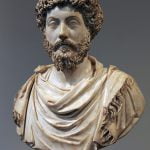Grant Adamson of Rice University in Houston read a letter from Egyptian soldier Aurelius Polion, written in Greek on papyrus 1,800 years ago.
His translations have been published in the latest issue of the magazine “Bulletin of the American Society of Papyrologists”. Papyrus was found in the ancient Egyptian city of Thebtisis on the edge of the oasis of Fayoum. Tebtynis was the centre of the cult of the crocodile god Sobek. In the years 1899-1900, British scientists Bernard P. Grenfell and Arthur S. Hunt conducted intensive excavations here. They discovered over 30,000 in the Sobka temple complex and in its vicinity. papyri. Many of them are still waiting to be read. Adamson managed to recreate the contents of the damaged letter by making infrared images of the document.
According to the letter, Aurelius Polion came from the Nile to the Danube. He was a soldier of the 2nd Adiutrix legion (2nd auxiliary legion), who guarded the border of the Roman Empire in Pannonia in the territory of today’s Hungary (from 106 CE he was stationed in Aquincum; today Budapest). Probably, Aurelius did not expect to be sent this far (the journey from Pannonia to Egypt then took over a month). He wrote to his family: “I pray day and night that you will be in good health (…). I am worried about you because you have often received letters from me and I have never received an answer… Since I am in Pannonia, I have written to you but you treated me like a stranger”.
Perhaps the courier failed – a Roman army veteran named Acutius Leon, whom Aurelius Polion entrusted with delivering the letters. One has an instruction showing it.







